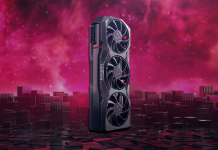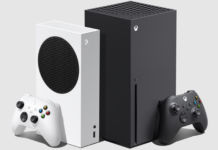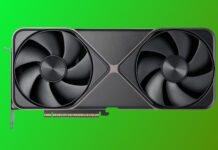DDR3 memory prices have started to drop down to almost reasonable levels and even though DDR2 still has the upper hand there, the differences are getting smaller by the minute. We have taken a closer look at a relatively unknown manufacturer that is focusing on raw performance at a competitive price.
The market for system memory is a mixed blessing with so many different manufacturers. A handful make the memory circuits themselves, a larger portion mounts these on circuits boards and eventually we have a seemingly endless variation of memory types with even more varying specifications. When you’ve finally found the needle in the haystack you can be sure that the manufacturer will change to a new revision of the memory modules and a worse collection of chips. For the anonymous regular user there is no reason to worry, no matter revision the modules should work as expected. The enthusiast on the other hand have a totally different view. A change of revision can transform what was once a pair of highly overclockable memories to a pair of marginally overclocking sticks which refuse to do go anywhere not matter how much voltage you feed them. Keeping yourself updated with the latest changes have become a necessity.

The end manufacturers have come up with a numerous ways to profile themselves; large aluminum profiles for heatsinks in various shapes and colors, blinking diodes, 7 segment displays and seemingly expensive and personal packaging. At the same time, they seem eager to hide the most important information of all, which directly tells us what’s actually important. The performance.
Today we at NordicHardware will look at a kit from a newcomer called CompuStocx, or just CSX. What makes CSX different from most other manufacturers is that they are going against the flow and cut through all of the details that have no affect on the performance and are at the same time very clear with what circuits they are using. You don’t have to go through data sheets or keep track of revisions, CSX prints the original product code right on the memory.
Let’s look at the specifications.
 | |
CSX Diablo3 2000 – Specifications |
|
| Product | DIABLO3-2000-2GB-KIT |
| Capacity | 2x1024MB |
| Memory type | 240 pin, DDR3 |
| JEDEC setting | 666MHz/1333DDR, CL9 |
| Circuit setup | 8x128MB per module |
| Circuit board | 8 lager |
| Memory circuit | Micron D9GTR |
| Expanded settings, Intel X38 | 800MHz/1600DDR, 7-6-5-14, 1.85V |
| Expanded settings, Intel X48 | 933MHz/1866DDR, 8-7-6-15, 1.90V |
| Expanded settings, nVidia 790i | 1000MHz/2000DDR, 8-7-6-19, 2.0-2.1V |
| Price | ~120 € |
Each memory module has an 8-layer circuit board with a single-side layout with eight 128MB memory circuits. Historically peaking, dual-side memories have had the upper hand when overclocking, but what it ultimately comes down to is the knowledge of the people that design the circuit boards. The JEDEC specifications are quite loose to avoid incompatibilities, but with the side effect that the speed of the modules may have to be set in the BIOS.
The modules comes with two large aluminum profiles to obtain a large surface for good heat transfer to the surrounding. The heatspreaders aren’t the absolute best on the market, but still maintain good quality that is more than sufficient. CSX has set a recommended price of 1120kr and if this is will be reflected in stores they are going to hold up extremely well in their market segment.
Next we have the test system.
 | ||
Test system |
||
| Hardware | ||
| Motherboard | ASUS P5E3 Premium | |
| Processor | Intel Core 2 Duo E8500 (6MB) | |
| Memory | CSX Diablo3 2000 (2x1024MB) | |
| Graphics card | nVidia GeForce 8800GTX | |
| Power supply | Corsair 1000HX | |
| Software | ||
| Test suite | MemTest86+ 2.10 |
|
The foundation of the system is ASUS P5E3 Premium, built around the X48 chipset. Different chipsets and different motherboards will behave differently when overclocking today’s high frequency memories. In the beginning of this test this was confirmed since other boards were not able to reach as high as P5E3. For testing we chose MemTest86+, which is acknowledged and a great tool for finding even the slightest bit of instability. To count as a successful round we set the bar at 10 complete iterations of test #5. The voltages given were obtained with a multimeter to be as precise and independent as possible.
We start at 6-6-6-15.
Most other chips from Micron respond well to increased voltages and we have therefore chosen to test from 1.60V up to 2.20V. Some memories can handle even more, but with these we saw no increase. It’s important to point out that feeding the modules with more than 2.10V during a longer period of time can be directly harmful, and that it makes no sense running higher voltages when there is no need for it at the specified frequency. These figures should be considered as an indication of the overclocking potential. In reality the overclocking potential varies between each module and is largely dependent on the motherboard. First up is 6-6-6-15 and these are the results.
CAS is tight for DDR3 and the frequencies are not especially high. TO run these timings with a 400FSB processor and the highest memory multiplier on today’s Intel chipsets, which results in 800MHz, you require a voltage of around 2.1V. At 2.2V the modules close in on 850MHz, or DDR1700 for those who want to play with the PC rating.
When we reach CAS7 we enter the region the memories were typed for, which is the next test.
CAS7 makes a big difference for the frequency scaling and we can see an increase of more than 100MHz at each voltage increment. We hit 900MHz/1800DDR at 2.0V and close in on 1GHz at 2.2V, but no quite. The promised frequency of 800MHz at 1.85V is certainly not a problem.
Let’s look at 8-8-8-20.
At CAS8 we can see another incremental increase of around 100MHz up to 1.9V. After that things slow down and over 2.1V there’s no real increase over what we’ve seen before. During previous tests we’ve noticed how more voltages than just the memory voltage have played a role. To make the frequencies scale beyond 900MHz we had to play around with the northbridge voltage to get the system completely stable. At 1GHz/2000DDR the memories required 2.1V, also at 500FSB with the highest multiplier, which is not a given with all motherboards and processors.
We summarize our tests in a diagram on the next page.

In general, we can see that the memories respond well to more voltage, and moving from 1.6V to 2.2V results in about 200MHz more overclocking at the different latencies. The setting 8-8-8-20 starts to stagnate at high voltages and 9-9-9-22 offered no improvements. The setting we regard as the best for these modules is CAS 7, which is a good compromise of frequency and latencies. The final decision of course depends on what the system can handle. We haven’t done any performance evaluations in this article, but this is something we’re working on for a future article.
We conclude our experiences with CSX Diablo3 2000 on the next page.
Performance
Many of the performance gains of today’s high-end systems are masked by efficient optimizations made by the people who designed the chipsets. There are two ways to look at it, either that the system was created for high frequencies after which the latencies are tightened when the system runs slower, or that the latencies are let loose to make room for higher frequencies. No matter what, the end user gets a good compromise.
Overclocking
Our choice fell on testing how well CSX’s memories handled overclocking at different latencies, regards to the voltage. The results show that CSX has managed to create a good product that candle many different latencies and a broad spectrum of voltages. This enables the user to use the settings that fits best with his, or hers, particular system in relation to the rest of the system. The specifications tells us that the memory can operate at frequencies up to 1000MHZ/2000DDR with timings at 8-7-6-19 and up to 2.10V, which is extremely aggressive. Our tests verify that the memories can indeed handle these settings and has more to give.
Product value
CSX says that it will recommend a price of 120 € in stores, but they are still a bit hard to come by. We will just have to wait and see what the store price will be .
Conclusion
CSX has chosen an open strategy when it comes to picking the circuits for its memories by explicitly telling everyone which circuits they use. Choosing Micron’s D9GTR makes them attractive from an overclocker’s point of view and these perform on par with other similar modules and have met our expectations. Based on the recommended price and the overclocking potential we’ve awarded CSX Diablo3 2000 the Editor’s choice award.
 |
|
Pros Cons | |
We would like to thank CSX for sending over the memory kit for evaluation.
















